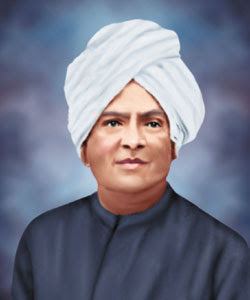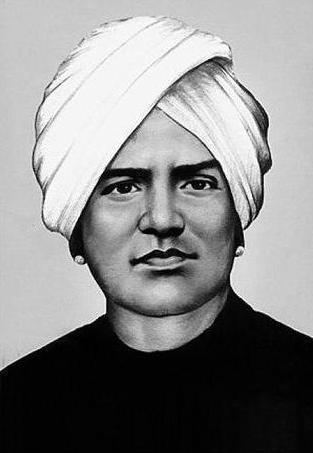Nationality British Indian Died 1914 Name Iyothee Thass | Occupation Siddha physician Other names Kathavarayan | |
 | ||
Born 20 May 1845 ( 1845-05-20 ) Nilgiris district Known for Dalit Buddhist movement Role Registered medical practitioner Similar P Kakkan, Immanuvel Devendrar, Rettamalai Srinivasan | ||
C. Iyothee Thass (20 May 1845 – 1914) was a prominent Tamil Activist and anti-caste activist and a practitioner of Siddha medicine who is regarded as a pioneer of the Dravidian Movement. He famously converted to Buddhism and called upon the Paraiyars to do the same, arguing that this was their original religion. He also founded the Punchmar Mahajana Sabha in 1891 along with Rettaimalai Srinivasan. Punchamas are the one who does not come under Varna system. They are called as Avarnas.
Contents
- Early life
- Assumption of leadership of Scheduled Caste
- Conversion to Buddhism
- Political activism and later life
- Legacy
- Criticism
- References

"Iyothee Thass" is the most common Anglicized spelling of his name; other spellings include Pandit C. Ayodhya Dasa, C. Iyothee Doss, C. Iyodhi Doss, C. Iyothee Thoss, K. Ayōttitācar (avarkaḷ) or K. Ayōttitāsa (paṇṭitaravarkaḷ).
Early life
Iyothee Thass possessed deep knowledge in Tamizh, Siddha medicine and philosophy, and literary knowledge in languages such as English, Sanskrit and Pali.
Iyothee Thass was born Kathavarayan on 20 May 1845 in Chennai's Thousand lights area, and later migrated to Nilgiris district. His family followed Vaishnavism, in basis of that he named his children Madhavaram, Pattabhiraman, Janaki, Raman and Rasaram. His grandfather worked for George Harrington in Ooty and little Kathavarayan profited immensely from this association.
Assumption of leadership of Scheduled Caste
In the 1870s, Iyothee Thass organized the Todas and other tribes of the Nilgiri Hills into a formidable force. In 1876, Thass established the Advaidananda Sabha and launched a magazine called Dravida Pandian in collaboration with Rev. John Rathinam.
In 1886, Thass issued a revolutionary declaration that Scheduled caste people's were not Hindus. Following this declaration, he established the Dravida Mahajana Sabha in 1891. During the 1891 census, he urged Scheduled caste people to register themselves as "casteless Dravidians" instead of identifying themselves as Hindus. His activities were inspiration to Sri Lanka's Buddhist revivalist Anagarika Dharmapala.
Conversion to Buddhism
Iyothee Thass met Colonel H. S. Olcott with his followers and expressed a sincere desire to convert to Buddhism. According to Thass, the Paraiyars of Tamilakam were originally Buddhists and owned the land which had later been robbed from them by Aryan invaders. With Olcott's help, Thass was able to visit Ceylon and obtain diksha from the Sinhalese Buddhist monk Bikkhu Sumangala Nayake. On returning, Thass established the Sakya Buddhist Society in Madras with branches all over South India. The Sakya Buddhist Society was also known as the Indian Buddhist Association and was established in the year 1898.
Political activism and later life
On 19 June 1907, Iyothee Thass launched a Tamil newspaper called Oru Paisa Tamizhan or One Paise Tamilian. In his later days, he was a vehement criticizer of Brahmins.
Iyothee Thass died in 1914 at the age of 69.
Legacy
Iyothee Thass remains the first recognized anti-Casteist leader of the Madras Presidency. In many ways, Periyar, Dravidar Kazhagam, Dr. Ambedkar, and Thirumavalavan are inheritors of his legacy. He was also the first notable Scheduled Caste leader to embrace Buddhism.
However, Iyothee Thass was largely forgotten until recent times when the Dalit Sahitya Academy, a publishing house owned by Dalit Ezhilmalai, published his writings. Ezhilmalai, then the Union Health Minister, also made a desired to name the planned National Center for Siddha Research after the leader. However, the proposal did not come into effect until 2005, when vehement protests by Se. Ku. Tamilarasan of the Republican Party of India (RPI) forced the Government to take serious note of the matter. The institute for Siddha Research (National Institute of Siddha) was subsequently inaugurated by Indian Prime Minister Manmohan Singh on 3 September 2005 and named it after the anti-caste Buddhist leader. At its inauguration, the hospital had 120 beds. The patients were treated as per the traditional system of Siddha medicine.
A commemorative postage stamp on him was issued on 21 October 2005. His works are nationalized and solatium was given to their legal heirs in 2008.
Criticism
In the early part of the 20th century, he indulged in vehement condemnation of the Swadeshi movement and the nationalist press remarking that he could "locate the power of the modern secular brahmin in the control he wielded over public opinion."
